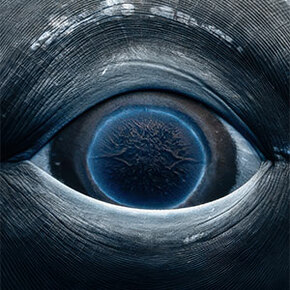
Scientists Show How Differently Birds See The World Compared To Humans
How come it’s that an eagle can snatch a rabbit off of the ground from hundreds of feet in the air and we can’t even grab a glass off a table without knocking it over? That’s because they see the world differently from us – and probably because they’re not as clumsy. If you ever wondered how exactly do birds see the world, scientists have an answer for you.
In a recently published paper titled Avian UV vision enhances leaf surface contrasts in forest environments, scientists Cynthia Tedore & Dan-Eric Nilsson mimicked bird vision using a multispectral camera.
More info: Cynthia Tedore

Image credits: Ian Glover
What they found out was that their vision was much more sensitive in the ultraviolet (UV) spectrum than in any other visible channels, whereas humans cannot see the UV spectrum at all.

Image credits: Klaus Schmitt
In the graph above, you can see the human spectral range compared to the one of a bird. Birds are tetrachromats, meaning they see four colors – red, green, blue and UV. Humans are trichromats and can only see red, green and blue. Technically, UV light has no color and the bright pink was only chosen for visual representation.

Image credits: unknown

Image credits: Cynthia Tedore
Back in 2007, using a spectrophotometer, scientists were able to analyze the colors of 166 North American songbird species that did not appear to have physical differences between the two sexes. What they found out was that even though the male and female birds look identical to the human eye, their colors differ greatly when viewed in the UV spectrum.

Image credits: Joel Sartore
In another experiment, scientists placed stuffed male and female Chats in the wild to see how the living birds would react to them. The wild Chats attacked the stuffed male and tried winning over the stuffed female, meaning the birds were actually seeing something the scientists didn’t.

Image credits: unknown
People had a lot to say about the bird vision





















Got wisdom to pour?